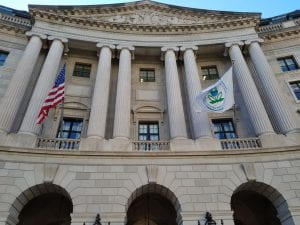I’m not a geographer by training or by discipline. I do have two Bachelor’s degrees in the following majors; Criminology, International Studies, Russian, and Political Science. I also have a Master’s degree in Public Policy and Administration. This doesn’t mean a whole lot, but what it does mean is that, there are certain issues that I’ve looked at through varying lenses depending on what discipline you’re talking about. As an example, policing and law enforcement in Criminology, Political Science, and Public Policy vary on methodology, cause and effect, history, and how to move forward depending on which one or which class you’re engaged in. The Cold War is different when you investigate the perspectives from an international relations lens versus a purely Russian cultural lens. None of them are wrong but none of them are 100% correct either. We, as human beings, engage in our world in different ways and the impacts of those actions snowball to coalesce into a much larger picture. If nothing else, what these varying disciplines have taught me is to think critically, think outside the box, and never to accept the given status quo.
Now, you would think, that something as simple as counting people would be – just that – simple. However, that is far from the case.
Yes, from a political science perspective, the census is written into the Constitution of the United States and accounts for distribution of representation across the country. The short answer about what the census is, can be wrapped up in a nice little bow by the following video.
However, the reality of the Census, is something much more complicated, long-lasting, and carries with it the ability to change our nation on a fundamental level. As the representation shifts across the country with each census count, the outcomes determine not only votes in the House of Representatives but resources distributed, prevailing ideologies, future political, social, and economic policies, and electoral college votes. Many people look at the census as a benign exercise and means very little the them personally, after all, it has little impact on their individual day to day lives.
The exact opposite is true. Maybe it’s the political science or public policy speaking, but for me, the fundamental importance of the census is the basis for everything else. The census is the first step in our nation deciding what type of country we want to be, what we value, and what is important to us. The census allows the voters to decide what type of leaders we send to Washington, and what the priorities are for the future.
The census is not the last step or the only step in changing our country and making it better, but it is the first. The first in a long line of standing up to be counted, and of encouraging the same of others – even against their fear and the prejudice they may face. The census is a call to action for anyone who is or isn’t happy with the policies being enacted on their behalf. If you ignore the call and are not counted, you are doing a disservice to yourself, your neighbors, and your community.
What does any of this have to do with Geography?
Great question! If you’re not a student of Geography-like me-, you’re not the only person asking it.
Geography is a varied discipline that encompasses not only cartography and maps, but the study of what makes those maps what they are, why people are where they are. It encompasses sustainability, mobility, climatology, social justice issues, immigration and migration, as well as land use. What does all this mean?
Well, the population isn’t spread evenly across the country. We’ve all seen the red and blue maps on election nights and how the distribution of those populations have an impact on viewpoints, ideologies, and politics. We know that the country is divided in their way of life: urban and rural. These divides correlate to race, economic status, education, and a whole host of other demographic markers that can be identified. We’ve also seen how the policies of our government impact land use, our national parks, and the regulations enacted to protect citizens from harmful pollutants. Becky Mansfield’s post regarding EPA deregulation is a great example. In Geography, not only are these issues discussed but form the foundation for critical thinking along lines that focus on the world around us and our impacts on it. The census, either directly or indirectly, has an impact on all of us. And in the end, what this all amounts to is power. Who has it? Who should get it?
We are at a critical stage. The U.S. Census bureau will end counting efforts on September 30th (a full month early), according to NPR. This means that if you hadn’t already filled out the questionnaire online, then your time is running out. You don’t have to go anywhere or talk to anyone to complete your census entry. It is the easiest first step to being a part of the process of representation you can ask for. Now is your chance to step up and be counted, just click the link below.
Suzanne M.S. Mikos
Department Manager
Department of Geography & Center for Urban and Regional Analysis
References and Links:
- Wang, Hansi Lo. “Census Cuts All Counting Efforts Short By A Month.” NPR, NPR, 4 Aug. 2020, www.npr.org/2020/08/03/898548910/census-cut-short-a-month-rushes-to-finish-all-counting-efforts-by-sept-30.
- Mansfield, Becky. “The Environmental Protection Agency at Fifty: Promoting Deregulatory Science.” Department of Geography Blog, Department of Geography, 9 Mar. 2020, u.osu.edu/geographyblog/2020/03/11/the-environmental-protection-agency-at-fifty-promoting-deregulatory-science/.
-
Bureau, US Census. “The Amazing Apportionment Machine Animated Video.” The United States Census Bureau, 27 Aug. 2019, www.census.gov/programs-surveys/sis/resources/videos/apportionment-machine.html.
